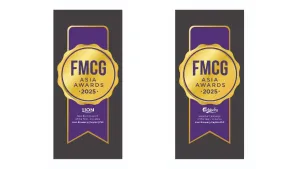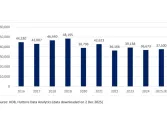Beyond hygiene: Thai consumers seek innovation in intimate care products
By Chayapat RatchatawipasananThailand's intimate hygiene product market has experienced significant growth, ranking amongst the top five in product launches in the APAC region over the past five years, according to data from the Mintel Global New Products Database. However, there is still room for innovation, as Thai consumers are seeking more than just hygiene from these products.
Economic concerns have influenced consumer behaviour, with many Thais tightening their budgets due to a financial slump. Data from Mintel APAC Economic Tracker shows that 45% of consumers have reduced spending on beauty and grooming routines. This budget consciousness may cause some consumers to delay incorporating intimate care into their routines, opting instead to use regular soap.
To sustain growth in the intimate care category, it is crucial for brands to highlight the key benefits and necessity of these products. Short-term opportunities lie in innovations that address major intimate skin concerns, such as uneven skin tone and texture and issues related to hair removal. Demonstrating value in this way can prompt purchases. Brands can develop formulas that not only provide skincare benefits but also balance the microbiome to encourage regular product usage.
Consumers’ preference for hair removal in intimate areas is another opportunity for brands to expand their ranges to address hair removal needs and other skincare concerns, especially amongst younger consumers who favour intimate hair removal and often rely on at-home solutions.
In Thailand, a significant percentage of Gen Z (57%) use hair removal products for intimate areas, and 55% use shaving products at least once a week. Amongst Gen Z women, over a third (35%) are concerned about hair growth in intimate areas whilst 33% are worried about acne.
Gen Z women are most interested in hypoallergenic claims in intimate care products (59%), whilst 48% show interest in soothing benefits. Thus, brands can help this cohort by innovating intimate care products that prepare the skin for a smooth shave and promoting proper pre- and post-hair-removal intimate care routines. Brands can also encourage the use of gentle, skin-soothing aftershave.
Another emerging focus for intimate hygiene brands is sexual wellness, which is gaining attention in Thailand. Mintel research shows that the majority of Thai women do not use intimate care products around sexual activity, which may lead to concerns about hygiene. The percentage of women using these products before and after sexual activity is significantly lower than that of men. Almost all women who use intimate care products around sexual activity use wash products at least once a week (95%), and a significant percentage use wipes (85%).
Concerns amongst women regarding intimate areas include odour and cleanliness. Brands can offer post-sex products that promote vaginal health and hygiene and develop lubricants that prioritise vaginal health.
Removing stigma and promoting a sex-positive attitude can create opportunities for innovation in sexual wellness products. In Thailand, smaller brands are leading in introducing products for sexual well-being, such as Femiss, a flavour and scent enhancer for intimate areas, and Hima Spray, which protects skin from irritation during sexual activity. Thai brands can also look to global brands that embrace the growing interest in sexual wellness and market their products accordingly.
Additionally, there is growth potential in the men's intimate care segment, as nearly half (49%) of male consumers express concerns about the appearance of their intimate skin. Brands can develop aftershave products to help with skin discomfort and irritation.
By addressing these diverse needs and preferences, intimate care brands can better serve Thai consumers and expand their market presence.


















 Advertise
Advertise





